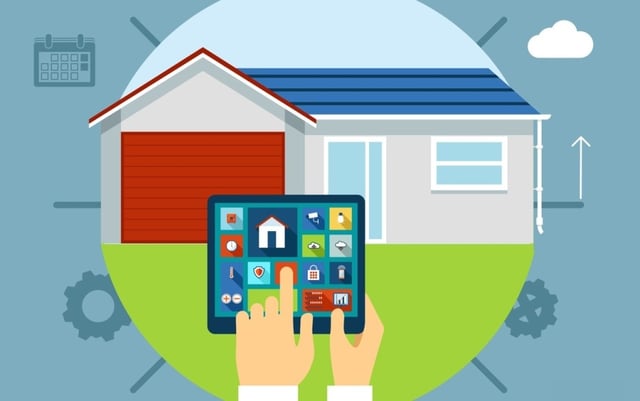To understand what the future of smart homes, we need to look at the evolution of devices and how they are deployed and used.
It was obvious for us years ago on how we categorize a “device” – mostly because they had electronic circuitry in them. By that definition, we would be surprised to learn about what things we have today that are not classified as devices but have circuitry: Library books with RFID, pets with ID chips, car keys, credit cards and utility water meter. These are uses that do not need constant power, but can be powered when needed to do an action by replacing manual actions we did previously.

This is the trend of the future: everything we have will start getting smarter, and I am talking everything. With wireless power enabling completely disconnected devices, we will start using smart silverware, food in smart packaging, intelligent furniture, situation aware devices and responsive intelligent electronics. Every item being connected to the internet in our homes.
We will not feel or know this deployment (electronic invasion?) is happening, but it will have a deep impact.
Once our homes are riddled with active, situation aware devices and start interacting with us, we will move somewhat away from our phones centric world. Today we are using our phone to control our environment and do everything else, when in the future, our environment will either do what we want automatically or when we interact with it. Imagine switching on a specific light by pointing at it instead of using the (physical) light switch or using phone app.
We will be heading to less phone oriented use at home to a home that is an extension of your mental world. You can interact with social media through any and every “device”[1], communicate and enjoy media everywhere. It fact we may not be so attached to our phones at home (or anywhere else for that matter[2]).
A smart home is a collective made of devices that sense, act and interact with the environment and us. But not only for their own purpose/content, but also for each other and as proxy for internet communication, social media, services, content and commerce.
[1] In our new definition of device being every item in our environment
[2] Security experts will have a fit with this, but haven’t they always?
 What will happen to our smartphones?
What will happen to our smartphones?
As usual, when we perfected the horse and buggy, the automobile became a reality, when we perfected the internal combustion engine, electric cars came into being. This will happen to the smartphone like the way the smartphone made our almost perfect laptops obsolete.
When the smartphone is all capable and present, we will have the smart home stepping in and leaving our smartphone in the dust. All the services you use and love will be available in new interactive formats – no less significant just reformatted.
I do not see our future home in a similar way to how sci-fi movies envision: our future will not be a spaceship environment made up of in-you-face gadgets galore with screens, buttons and touch surfaces. The future will look much more organic, with our homes maybe looking more like 1920’s homes with all the smarts hidden away beneath the surface than the Jetsons. The electronics will come into our homes without us realizing it; they will be embedded into our stuff and gets connected and used. New homes will have built-in “smarts” into the walls.
We will not keep buying screens and electronics for their own sake but we will continue buying furniture and consumables with embedded smarts. We will end up in the connected smart home future without knowing it.
This “fantastical” future is gradually happening today with the necessary ingredients: more intelligence is being added to just about everything, connectivity is now cheap and easy, wireless power is a reality (with Cota™ being offered into the market by Ossia) and our desire of a better life.
Watch your environment get smarter every day.
[1] In our new definition of device being every item in our environment
[2] Security experts will have a fit with this, but haven’t they always?






